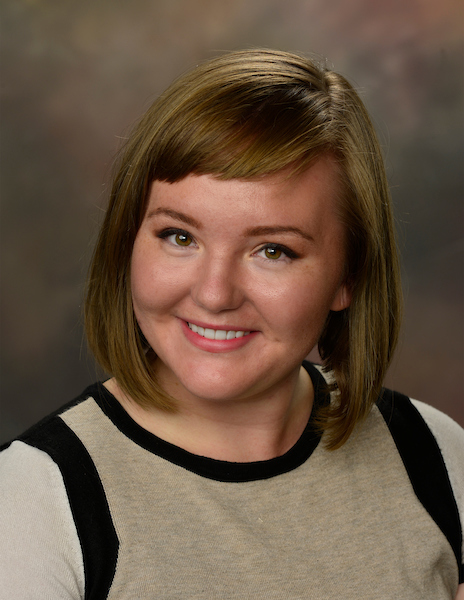COSAM News Articles 2022 August Department of Geosciences student conducts research at the Smithsonian Institution about the perspectives of climate change
Department of Geosciences student conducts research at the Smithsonian Institution about the perspectives of climate change
Steph Courtney seeks to make an impact in climate change through her research. This spring, she worked for two weeks at the Smithsonian’s National Museum of Natural History (NMNH) in the “Deep Time” exhibit hall using eye-tracking glasses, asking in-person questions about exhibits and giving visitors paper surveys to complete.
“Climate change is the biggest challenge of our lives, and it is a critical part of everyone’s future,” she explained.
Courtney, who defended her thesis and graduated this summer with her Earth System Science doctorate degree, spent two weeks collecting data in two displays in the fossil hall with 33 participants in each area. Every third visitor that was looking at the exhibit panels with information specific to modern climate change in this historic building was asked to participate in the study.
“I hope my research will help make improvements to the overall visitor experience at the Smithsonian,” Courtney said.
Her research lies at the intersection of climate change and human behavior.
“Geosciences is an exciting field where you can collectively think with a team and make a difference that can positively change the future,” she added. “The work in geosciences is helping scientists to figure out factors that will help everyone through the changes we are feeling from climate change.”
At the Smithsonian, she worked with Scott Wing, a research geologist and curator of paleobotany at the Smithsonian Institution, NMNH, and Siobhan Starrs, an exhibition developer and project manager at the Smithsonian Institution, NMNH.
"It was terrific working with Steph,” said Wing. “We met at an American Geophysical Union meeting in 2019, I think. She was interested in better understanding how people reacted to visual information about climate change, particular graphs. I had just finished working on the new history of life exhibitions here at NMNH and wanted to know how visitors would see the graphs we present that show how Earth’s climate has changed through time. Clearly, we had a common goal!”
Courtney was a graduate student in the Department of Geosciences before the doctoral program began and she was excited to continue her studies with this new program.
Courtney’s PhD advisor, Karen McNeal stated that “the work she has completed with the Smithsonian exemplifies how tools in geoscience education research can be used to help better communicate science to the public. As an Auburn NRT Climate resilience trainee during her PhD, Courtney received much training in science communication, education research and evaluation, and climate science and as such her unique skill set has allowed her to contribute in this much needed area of our field.”
“The faculty in the Department of Geosciences are amazing,” she said. “I have been supported by all of the faculty and have had such a positive experience as a doctoral student at Auburn University.”
After she graduates, Courtney will publish results from this study in a museum-centric journal. She is looking forward to moving to Minneapolis where she will be seeking to begin her career.
Latest Headlines
-
07/09/2024
-
Summer Bridge Program celebrates 21 incoming Auburn students as they prepare for future STEM careers07/02/2024
-
07/02/2024
-
06/17/2024
-
06/07/2024

